From Hand to Machine: Taking Ad Campaigns Auto with AI Tools
The advertising ecosystem is changing at a pace never seen before, and companies that are dependent on manual campaign management are in danger of falling behind. AI-powered automation is not a luxury anymore—it's the need of marketers who desire to scale, optimize, and outcompete.
In this blog, we’ll explore how AI is transforming ad campaigns, from automated targeting to creative generation and real-time budget optimization.
1. The Shift to Automation: Why Manual Campaign Management No Longer Scales
Hand management of digital ad campaigns was the way in the past—setting bids, testing creatives, and optimizing audiences by gut instinct and some modest technological input. But with the proliferation of digital media, consumer behaviors, and real-time bidding, manual management has become impossible.
Key Challenges of Manual Campaign Management:
- Long Processes: Marketers spend days setting bids, reviewing reports, and A/B testing creatives.
- Human Guesswork & Intuition: Campaign decisions rely more on intuition than data-driven insights.
- Inability to Scale: Simultaneous management of many platforms (Meta, Google, TikTok, etc.) is daunting.
- Delayed Optimization: Real-time optimization is unattainable without automation.
How AI Fixes These Inefficiencies:
AI-powered automation software processes tremendous data in milliseconds and makes decisions that would take human computers days to calculate. By tapping into machine learning, AI:
- Automatically optimizes bids for performance.
- Discovers high-converting audiences in real-time.
- Tries thousands of ad permutations without human effort.
The payoff? Quicker optimizations, better ROI, and the power to scale campaigns with ease.
2. How AI Works in Advertising: What It Can (and Can't) Do
AI is transforming advertising, but it's no magic bullet. Understanding its advantages and limitations allows marketers to utilize it properly.
What AI Can Do:
Performance Prediction: AI processes historical data to predict which creatives, audiences, and placements will perform best.
Automated Creative Generation: Software such as AdCreative.ai and Canva's AI produces ad variations (images, videos, copy) at scale.
Dynamic Targeting: AI processes first-party data, browser behavior, and engagement signals to identify high-intent users.
Real-Time Bidding & Budget Allocation: AI optimizes spend across campaigns to drive most conversions.
What AI Can't Do (Yet):
Replace Human Creativity: While AI can output ad variations, human creativity is still necessary for narrative and emotional resonance.
Get Nuanced Brand Voice: AI can lack subtle brand guidelines if not trained accordingly.
Take Strategic Decisions: AI optimizes within predetermined parameters but can't design long-term marketing strategies.
The way forward? Employ AI for execution and data-driven decision-making, and let human minds concentrate on strategy and creativity.
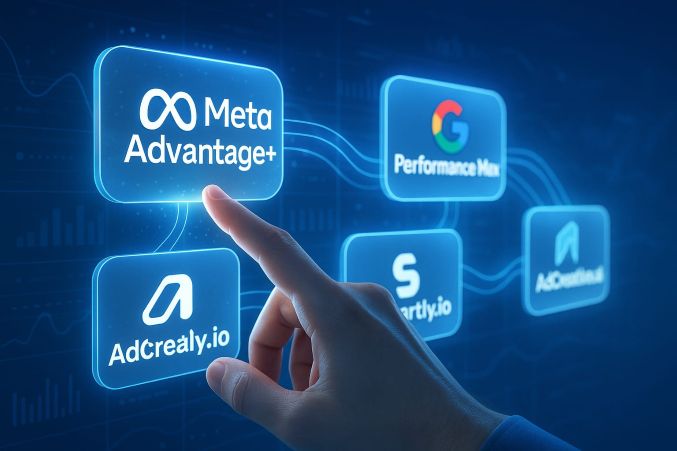
3. Top AI Tools Revolutionizing Ad Campaigns in 2025
A number of AI-driven platforms are spearheading ad automation. Following are the top tools marketers need to know:
1. Meta Advantage+
- Use Case: Automates audience targeting, creative optimization, and ad placements on Meta's platform (Facebook, Instagram).
- Key Feature: Applies reinforcement learning to try out millions of combinations and determine which ads perform the best.
2. Google Performance Max
- Use Case: Cross-channel automation of campaigns (Search, Display, YouTube, Gmail).
- Key Feature: AI-based budget distribution and audience enlargement based on conversion objectives.
3. Smartly.io
- Use Case: Programmatic ad buying and creative automation for social media ads.
- Key Feature: AI-driven A/B testing and dynamic creative optimization (DCO).
4. AdCreative.ai
- Use Case: Creates high-converting ad creatives (images, headlines, CTAs) within seconds.
- Key Feature: Leverages predictive analytics to suggest the top-performing visuals.
These tools take guesswork out of the equation so marketers can concentrate on strategy while AI takes care of execution.
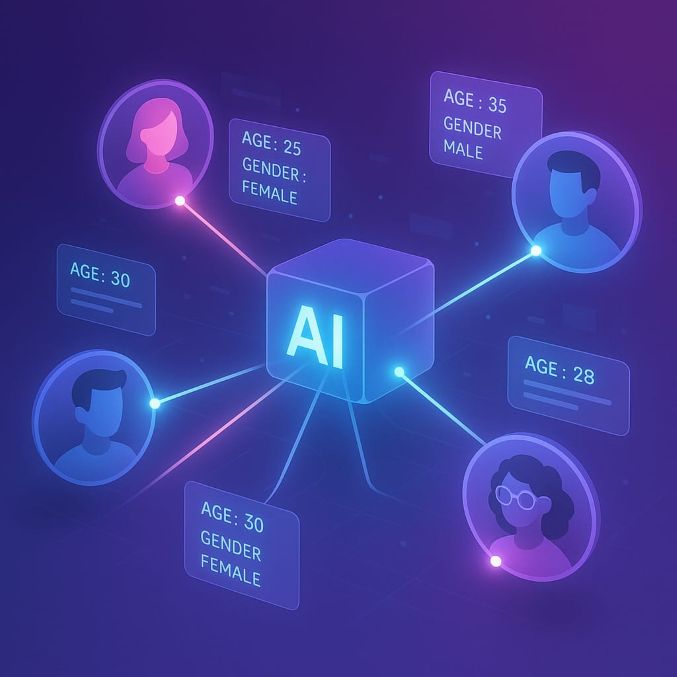
4. Automated Targeting: How AI Finds Your Best-Converting Audiences
Manually defining audience segments is now a thing of the past. AI now reviews thousands of signals to discover high-value customers.
How AI Targeting Works:
- First-Party Data Use: AI uses CRM data, website activity, and previous purchases.
- Predictive Modeling: Determines lookalike audiences with similar attributes as current customers.
- Real-Time Signal Processing: Refines targeting based on real-time engagement (clicks, video views, cart abandonment).
Example: Meta's Lookalike Audiences 2.0
Rather than static audience lists, Meta's AI constantly optimizes targeting by examining:
- Demographic changes
- Behavioral patterns
- Engagement trends
Result? Increased conversion rates and reduced customer acquisition cost (CAC).
5. Creative Automation: Scaling Ad Variants with AI
Having to make hundreds of ad variations by hand is boring. Creative automation with AI eliminates this by producing and testing various copies in a matter of minutes.
How AI Increases Ad Creativity:
Dynamic Image & Video Generation: Jasper Art and Runway ML are tools that produce images based on text inputs.
AI-Generated Copy: ChatGPT-based tools (such as Copy.ai) generate catchy ad headlines and copy.
Multivariate Testing: AI tests thousands of variations to identify the highest-performing creatives.
Case Study: How Coca-Cola Leverages AI for Hyper-Personalized Advertising
Coca-Cola's AI examines users' likes and dislikes to deliver personalized ads—alternate imagery, messaging, and CTAs per viewer. Such personalization at scale was not feasible with manual processes.
6. Real-Time Budget Optimization: Allowing AI to Control Ad Spend for ROI
One of the greatest challenges with digital marketing is getting the most out of ROI while avoiding wasted ad spend. Manual traditional bidding tends to result in:
- Undersized campaigns because changes are made too slowly.
- Over-spending on low-converting segments.
- Missing opportunities on high-value placements.
How AI Optimizes Budget Allocation:
AI-based platforms such as Google Performance Max and Smartly.io employ machine learning to:
Automatically Shift Budgets – AI redistributes spend in real-time according to performance signals (CTR, conversions, ROAS).
Prioritize High-Value Channels – If TikTok ads are performing better than Facebook, AI raises budget there.
Adjust Bids Dynamically – AI increases bids for highly engaged users and decreases bids for less engaged audiences.
Case Study: How an E-Commerce Brand Cut CAC by 40% with AI Budgeting
A fashion brand applied Meta's Advantage+ to automate ad budget. The AI:
- Detected that Instagram Reels generated 3x more conversions than static advertising.
- Allocated 70% of the budget to Reels, cutting cost per acquisition (CPA) by 40%.
Key Takeaway: AI ensures every dollar is spent where it returns the most.
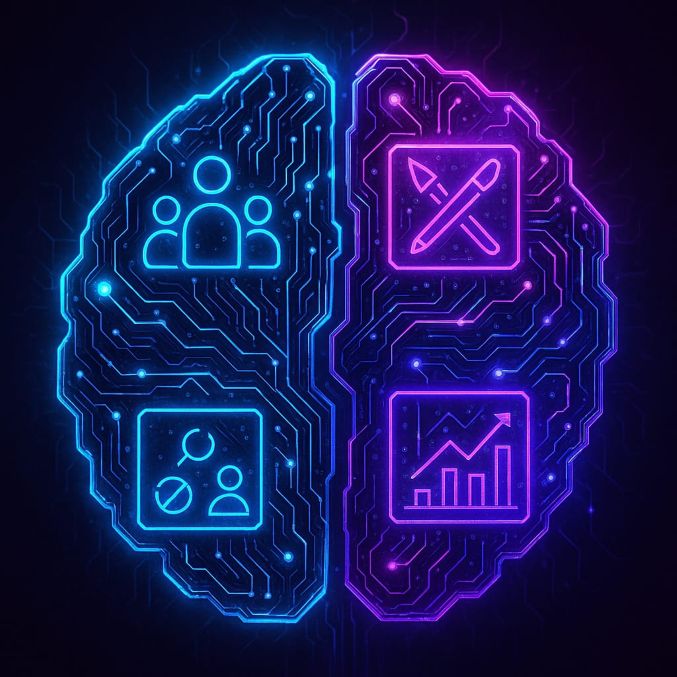
7. The Role of Predictive Analytics in Campaign Strategy
What if you could predict campaign success before launching it? That's the power of AI-powered predictive analytics.
How AI Forecasting Works:
AI looks at:
Historical Data – Past campaign performance, seasonality trends.
User Behavior – How users with similar characteristics reacted to past ads.
Market Conditions – Competing activity, economic conditions.
Application of Predictive Analytics in Advertising:
Predicting ROI Prior to Launch – AI gauges possible conversions and revenue.
Determining High-Performing Creatives – Forecasts which ad permutations will perform best.
Predicting Market Trends – AI can identify upcoming trends (e.g., increased demand for a product).
Example: Netflix's AI-Powered Ad Strategy
Netflix employs predictive models to:
- Establish which show trailers will draw the biggest audiences.
- Spend ad budgets based on subscriber growth estimates.
Why It Matters: Predictive analytics eliminates guesswork, enabling marketers to make data-driven decisions.
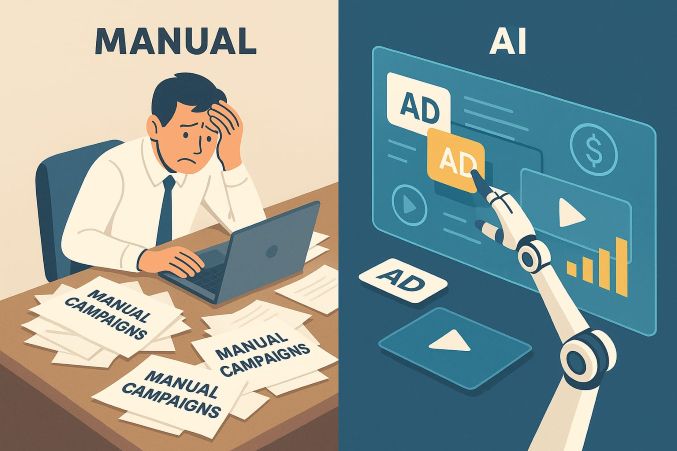
8. Human + Machine: The Ultimate Workflow for AI-Augmented Marketers
AI is strong, but it doesn't replace marketers—it makes them better. The optimal outcome results from the pairing of human intuition and machine efficacy.
What AI Does Best:
Execution: Real-time bidding, A/B testing, budget allocation.
Analysis of Data: Determining trends, maximizing performance.
Repetitive Tasking: Creating ad variations, reporting.
Where Human Touch Remains Key:
Strategy: Campaign goal-setting, brand messaging.
Creativity: Writing emotional storytelling that goes beyond AI-driven templates.
Ethical Governance: Preventing AI from perpetuating biases or abusing data.
The Ideal AI-Enhanced Marketing Workflow:
- Humans Establish Strategy – Determine KPIs, audience segments, brand guidelines.
- AI Executes & Optimizes – Runs the campaigns, tests the creatives, optimizes bids.
- Humans Review & Refine – Interpret insights, tweak AI inputs for better results.
Key Insight: The future belongs to marketers who leverage AI as a co-pilot, not a replacement.
9. Risks and Limitations: Where Automation Can Go Wrong
While AI offers immense benefits, blind reliance on automation can backfire. Here are key risks to watch for:
1. Lack of Transparency ("Black Box" AI)
- Certain AI models do not justify why they make particular choices (e.g., why an ad was displayed to a specific group of people).
- Solution: Utilize tools with explainable AI (XAI) capabilities.
2. Over-Optimization Resulting in Ad Fatigue
- AI can continue to display the same high-performing advertisement until users tire of it.
- Solution: Implement frequency caps and rotate creatives on a regular basis.
3. Data Privacy & Ethical Issues
- AI-based targeting can occasionally blur privacy lines.
- Solution: Adhere to GDPR/CCPA and utilize first-party data responsibly.
4. AI Bias When Targeting
- Trained on biased data, AI can leave out specific demographics unjustly.
- Solution: Fairness audit AI models and make training data more diverse.
Pro Tip: Never "set and forget" when it comes to AI-driven campaigns.
10. The Future of Ad Automation: What's Next in AI Advertising
AI is changing fast. Here's what to look forward to in the near future:
1. Generative AI for Hyper-Personalized Ads
- AI will soon develop personalized ads for each user in real-time (e.g., customized video ads).
2. Voice & Visual Search Optimization
- With the rise of voice assistants (Siri, Alexa) and visual search (Pinterest Lens), AI will optimize advertising for these modes.
3. AI-Powered Cross-Channel Attribution
- AI will be able to follow users through every channel (social, email, search) to determine actual ROI.
4. Autonomous Self-Learning Campaigns
- Future AI will correct itself without human influence, pivoting strategies based on live data.
Prediction: By 2030, 90% of online ads will be totally AI-driven with people in charge of strategy.
Final Thoughts: Welcome AI, But Remain in Charge
AI is transforming advertising—faster improvements, more ROI, and unimaginable scalability. Yet, the best marketers will be the ones who:
Harness AI for effectiveness (automations, targeting, creative).
Use human judgment (approach, ethics, creativity).
Remain flexible as AI keeps improving.
What’s your biggest challenge with AI-powered ad automation? Let’s discuss in the comments!

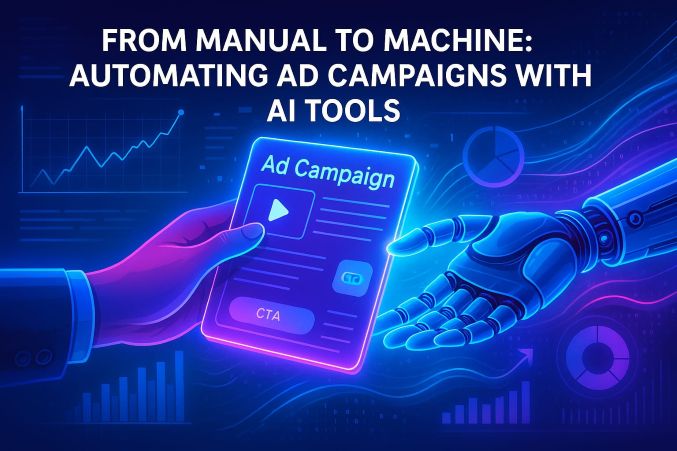
Comments
No Comments To Display